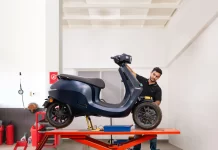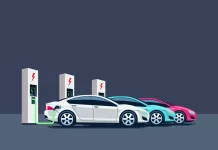
Vietnamese automaker VinFast is actively exploring options to establish its manufacturing base in India. Among these alternatives, the company has initiated discussions regarding the Ford India factory in Chennai. With talks still in their early stages, it’s the latest intriguing development that holds the promise of something significant for the Indian automotive landscape.
Now, let’s delve into the full scenario and know the details of the trending news in points.
Table of Contents
VinFast’s Indian Manufacturing Exploration:
- VinFast, a prominent Vietnamese electric vehicle manufacturer, is actively considering the Ford India factory in Chennai as part of its global expansion strategy.
- Their approach in India involves beginning with fully assembled imports and knocked-down kits before gradually transitioning to local manufacturing units later in the decade.
Ford’s Response:
- In response to VinFast’s exploration of the Chennai plant, the spokesperson at Ford stated, “We continue to explore alternatives for the Chennai plant and have nothing further to add,” as confirmed by one of the informed sources.
Capacity Consideration:
- While Ford’s Chennai plant can produce up to 210,000 units, VinFast plans to establish a more scaled-down operation in acknowledgment of India’s evolving electric vehicle market.
- Acquiring the existing Ford factory is seen as a cost-effective alternative to constructing a new greenfield facility.
India as an Export Hub:
- VinFast envisions India not only as a domestic market but also as a vital export base, particularly for right-hand drive markets in the latter part of this decade.
- This strategic move aligns with VinFast’s long-term commitment to the Indian market demonstrating their dedication to establishing a strong presence and actively contributing to India’s evolving automotive landscape.
Tamil Nadu’s Strength:
- Tamil Nadu stands out as a highly attractive location for VinFast’s manufacturing plans due to its matured automotive component ecosystem.
- The state’s fast-growing electric vehicle components manufacturing sector further strengthens its case as an ideal setting for VinFast’s production base.
Production Capacity Goals:
- VinFast’s goal in India is to establish a manufacturing facility capable of producing a minimum of 100,000 units.
- Their strategy involves initially targeting the top end of the market with fully imported vehicles and later expanding into the core B-segment, which is anticipated to drive significant volumes in the future.
Global Success and Portfolio:
- VinFast has achieved remarkable success in its home market of Vietnam and has expanded its presence to the United States and Europe.
- Their electric vehicle portfolio includes models like the VF e34, VF 8, VF 5, and VF 9, reflecting their strong commitment to sustainable mobility.
The Cost-Effectiveness Factor:
- The recent sale of Ford’s Sanand factory in Gujarat to Tata Motors for a competitive price underscores the potential cost-effectiveness of VinFast’s acquisition of the Chennai plant.
- The negotiations for this move, however, entail careful consideration of workers’ settlements.
CONCLUSION
To conclude, VinFast’s exploration of the Ford Chennai factory signifies its ambitious entry into the Indian market, with plans that extend far beyond mere domestic presence. Their vision includes establishing India as a key export hub, leveraging Tamil Nadu’s automotive ecosystem for their manufacturing endeavors, and doing so in a manner that aligns with cost-effective strategies. Ford’s response adds another layer of insight into the situation, reflecting the ongoing deliberations surrounding the Chennai plant. It will be highly interesting to see VinFast’s final decision, hinting at even more surprises in store for Indian EV enthusiasts in the near future.







JSW??